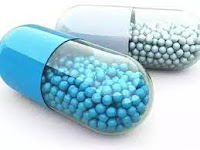Vitamins are a class of organic compounds that are necessary in the process of human life activities. They have three characteristics:
1. Exist in natural foods.
2. The human body generally cannot be synthesized and must be supplied by food.
3. It is neither a raw material for body tissues nor does it provide energy. Its physiological needs are small, but it is indispensable for the human body.
Deficiency or excess of vitamins will have a strong effect on human health.
|
Name |
Origin |
Solubility |
|
Vitamin A (Retinol) |
Cod liver oil, green vegetables |
Fat soluble |
|
Vitamin B1 (Thiamine) |
Liver, yeast, cereal, meat, soy |
Water soluble |
|
Vitamin B2 (Riboflavin) |
Liver, yeast, egg, vegetables |
Water soluble |
|
Vitamin B3 (Niacin) |
Liver, cereal, yeast |
Water soluble |
|
Vitamin B5 (Pantoic acid) |
Liver, yeast, vegetables, cereal |
Water soluble |
|
Vitamin B6 (Pyridoxine) |
Liver, yeast, dairy products, egg,
cereal |
Water soluble |
|
Vitamin B7 (Biotin) |
Liver, yeast, cereal |
Water soluble |
|
Vitamin B9 (Folic acid) |
Liver, vegetable leaf |
Water soluble |
|
Vitamin B12 (Cobalamins) |
Liver, egg, fish, meat |
Water soluble |
|
Choline |
Liver, dairy products, soy, yolk |
Water soluble |
|
Inositol |
Meat |
Water soluble |
|
Vitamin C (Ascorbic acid) |
Fruit, fresh vegetables |
Water soluble |
|
Vitamin D (Calciferol) |
Cod liver oil, yeast, dairy
products, yolk |
Fat soluble |
|
Vitamin E (Tocopherol) |
Liver, vegetable oil, egg, fish |
Fat soluble |
|
Vitamin K (Naphthoquinones) |
Liver, spinach |
Fat soluble |
Vitamin deficiency
Vitamins participate in all links in the process of life activitie. It maintains the normal
function of the nervous system, participate in the synthesis and metabolism of protein and fat, participate in the synthesis of various enzymes and antibodies and so on. Vitamin deficiency will seriously affect the normal metabolism of physiological functions and even threaten life.
Causes of vitamin deficiency:
Vitamin A: Night blindness, dry skin, dry cornea and desquamation.
Vitamin B1 (Thiamine): The oxidation of sugar in the tissue is affected by Vitamin B1. It also has the effect of inhibiting cholinesterase activity. When it is lacking, the enzyme activity is too high. Acetylcholine (one of the neurotransmitters) is destroyed in a large amount and nerve conduction is affected. It can cause slow gastrointestinal peristalsis, reduced secretion in the digestive tract, indigestion, loss of appetite, neuritis, beriberi and growth retardation.
Vitamin B2 (Riboflavin): Oral ulcers, glossitis, angular cheilitis, cleft lip, keratitis, dermatitis, etc.
Vitamin B3 (Niacin): It is manifested as neurotrophic disorder. The whole body is weak at first and then symmetrical dermatitis appears on the hands, cheeks, left and right forehead and other exposed parts.
Vitamin B5 (Pantoic acid): Because of its ubiquity, no typical cases of deficiency have been found in the human body.
Vitamin B6 (Pyridoxine): Causes vomiting, cramps and other symptoms. Since food is rich in vitamin B6 and can also be synthesized by intestinal bacteria, vitamin B6 deficiency rarely occurs.
Vitamin B7 (Biotin): Including eczema, dermatitis, hyperesthesia, atrophic glossitis, fatigue, muscle pain, anorexia, hair loss and mild anemia.
Vitamin B9 (Folic acid): White blood cells are reduced, the volume of red blood cells become larger and giant cell anemia occurs. Neutrophils are abnormal. Human intestinal bacteria can synthesize folic acid, so deficiency diseases are generally less likely to occur. However, when malabsorption, metabolic disorders or tissue requirements are too high, and long-term use of intestinal antibacterial drugs (such as sulfonamides), etc., can cause folic acid deficiency.
Vitamin B12 (Cobalamins): Megaloblastic anemia.
Choline: Abnormal liver function, the liver accumulates a large amount of lipids (mainly triglycerides), which eventually fills the entire liver cells. It also harms kidney function. Genetic damage and mutant cell can form tumors cell survive and proliferate. Infertility, growth retardation, bone abnormalities, hematopoietic disorders and hypertension related to dietary low choline have also been reported.
Inositol: Hair is easy to turn white and eczema.
Vitamin C: Scurvy and decreased resistance.
Vitamin D: Kids: Rickets; Adults: Osteoporosis.
Vitamin E: Infertility, abortion, muscle atrophy, etc.
Vitamin Overdose
Excessive intake of vitamins will not only destroy the stability of the human body's environment, but even cause poisoning.
Vitamin A overdose:
Adults who consume more than 50,000 IU a day for several months can cause poisoning. If children intake more than 18500IU in a day, it will cause poisoning.
Main manifestations: Due to the enhanced activity of osteoclasts, bone decalcification, increased bone fragility, growth inhibition, thickening of long bones and bone and joint pain. dry skin, itching, scaly skin, rash, peeling, hair loss, finger (toe) nails are fragile. Irritability, fatigue, headache, nausea, vomiting, muscle weakness, restlessness. Reduced appetite, abdominal pain, diarrhea, hepatosplenomegaly, jaundice. Blood hemoglobin and potassium are reduced, clotting time is prolonged and bleeding is easy.
Vitamin D overdose:
Vitamin D is an important medicine for the prevention and treatment of rickets, but the consequences of overdose are more dangerous than suffering from rickets. If a child takes 20,000 units a day for a few weeks or months, it causes headache, anorexia, nausea, vomiting, thirst, drowsiness, polyuria, dehydration, high fever and coma, protein and red blood cells appear in the urine. If it is not stopped in time, death can be caused by hypercalcemia and renal failure.
Vitamin A and D poisoning has the highest incidence in infants and children aged 6 months to 3 years. It is mostly caused by parents taking too much cod liver oil for children.
Vitamin B1 overdose:
Large amount of vitamin B1 intaking can cause dizziness, diarrhea, edema, arrhythmia and so on. If the intramuscular injection is overdose, erythema, rubella, contact dermatitis, bronchial asthma and even anaphylactic shock can occur. Overdose in pregnant women can cause postpartum hemorrhage.
Vitamin B2 overdose:
Large dose injection of vitamin B2 can block the renal tubules and resulting in renal dysfunction such as oliguria.
Vitamin B3 overdose:
It can cause skin flushing, fever, itching and fotmication (Feeling like there are some ant walking on skin). Symptoms such as palpitation, vomiting and nausea can also occur.
Vitamin B6 overdose
If pregnant women use a large dose of 25 mg or more, it can affect the supply of fetal nutrition and cause fetal development obstacles. Anaphylactic shock can also occur if the intramuscular injection is overdose.
Vitamin B9 overdose
There will be bitter taste in the mouth, anxiety and abnormal sleep patterns.
Vitamin B12 overdose
Allergic reactions such as asthma, urticaria, eczema, drug rash and facial edema can occur, as well as precordial pain and palpitation. Therefore, it can aggravate the condition of patients with angina or increase the number of attacks.
Vitamin C overdose
Long-term large intaking can cause nausea, vomiting, abdominal pain and diarrhea. If reducing the dosage suddenly, it is more likely to suffer from scurvy than before taking vitamin C. The urine is acidified and oxalate increases rapidly, causing kidney stones are easily formed. Rapid intravenous injection of large doses of vitamin C can cause red blood cell lysis or venous thrombosis, which is fatal. Babies who take a lot of vitamin C often suffer from restless sleep, indigestion, edema, diarrhea, and urticaria. Repeated intravenous injections of vitamin C can cause itchy papules and even anaphylactic shock and death.
Vitamin E overdose
If the daily dosage is more than 400 mg, long-term application may cause thrombosis and also cause menorrhagia or amenorrhea. When the dose is 2000 to 12000 mg, it will affect the fertility. For diabetic patients with severe hypertension, myocardial damage and insulin therapy, vitamin E should be used with extreme caution. At the beginning, 100 mg per day, then gradually increase the dose, otherwise it is easy to cause platelet aggregation and thrombosis.
Vitamin K overdose
It can cause hemolytic anemia and liver cell damage, as well as allergic reactions.




















